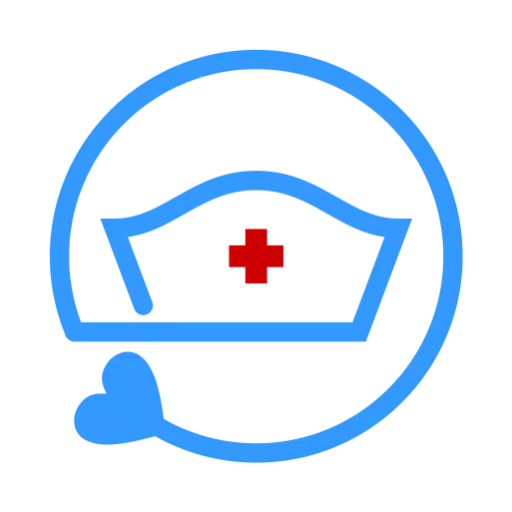Last updated on December 28th, 2023
Here we will formulate sample Cystic Fibrosis nursing care plans based on a hypothetical case scenario.
It will include three cystic fibrosis nursing care plans with NANDA nursing diagnoses, nursing assessment, expected outcome, and nursing interventions with rationales.
Cystic Fibrosis Case Scenario
A 16-year-old female presents to the ED accompanied by her father with complaints of shortness of breath, cough, fever, and weight loss.
The patient has a history of cystic fibrosis. She reports struggling with a lung infection for the last few days. While initially mild, the infection progressed to a hacking cough, yellow sputum, and a fever of 38.2 ˚C.
The patient’s father says she hasn’t been able to eat for the last 2 days due to a lack of appetite. Despite aggressive care at home, the patient’s shortness of breath worsened and they decided to seek medical care.
Upon assessment, the patient is diaphoretic and appears malnourished. She weighs 45.3 kg and her BMI is 15.
Her temperature is 38.3 ˚C, heart rate is 117 BPM, blood pressure is 121/79 mmHg, respiratory rate is 29 breaths per minute, and oxygen saturation is 89% on room air.
Upon auscultation, crackles and expiratory wheezes are heard. The patient has a hacking cough and dark yellow, thick sputum is noted.
The patient’s blood work reveals elevated white blood cells at 16.8 K/mcL.
A chest x-ray is ordered and reveals bronchiectasis and hyperinflation consistent with cystic fibrosis, as well as bilateral lobar consolidations consistent with pneumonia.
Blood and sputum cultures are sent to the lab for analysis.
The patient is admitted for an exacerbation of Cystic Fibrosis.
#1 Sample Cystic Fibrosis Nursing Care Plan – Ineffective airway clearance
Nursing Assessment
Subjective Data:
- The patient complains of shortness of breath and cough.
Objective Data:
- Yellow, thick sputum is noted.
- Crackles are auscultated.
- Oxygen saturation is 89% on room air.
Cystic Fibrosis Nursing Diagnosis
Ineffective airway clearance related to abnormal mucous production secondary to genetic disorder as evidenced by thick, yellow sputum, adventitious lung sounds, and oxygen saturation of 89%.
Goal/Desired Outcome
Short-term goal: The patient will utilize airway clearance techniques and the patient’s lung sounds will improve.
Long-term goal: The patient and her family will be able to list several airway clearance techniques, with the proper equipment and resources to continue this treatment at home.
Cystic Fibrosis Nursing Interventions with Rationales – Ineffective airway clearance
| Nursing Interventions | Rationales |
| Monitor lung sounds. | Auscultation of lung sounds is a fast, non-invasive way of monitoring patient progress. |
| Encourage coughing and teach breathing techniques. Active cycle of breathing technique (ACBT). Autogenic drainage (AD). | The patient should be encouraged to cough frequently and strongly. ACBT and AD are two breathing techniques that can improve lung function and mobilize and clear secretions. |
| Utilize airway clearance techniques and devices. Percussion and postural drainage. Positive expiratory pressure (PEP) devices and oscillatory PEP devices. High-frequency chest compression devices (HFCC). | Percussion manually breaks up mucous through energy waves, while postural drainage utilizes positioning and gravity to mobilize secretions. PEP devices (such as an Acapella) require the patient to exhale against resistance, which builds pressure in the lungs, thus mobilizing secretions. HFCC devices are worn as vests that vibrate at high frequencies, thus breaking up mucous. |
| Administer bronchodilators. | Bronchodilators such as albuterol are used to relax airway muscles and widen the bronchi. |
| Administer inhaled mucolytics. | Examples include hypertonic saline and dornase alfa. These should be administered before airway clearance techniques. |
| Collect a sputum sample and administer antibiotics. | A culture and sensitivity of the sputum can determine the causative organism and the antibiotic that works best to treat the infection. |
#2 Sample Cystic Fibrosis Nursing Care Plan – Impaired gas exchange
Nursing Assessment
Subjective Data:
- The patient complains of shortness of breath and cough.
Objective Data:
- Expiratory wheezes are auscultated.
- Oxygen saturation is 89% on room air.
Cystic Fibrosis Nursing Diagnosis
Impaired gas exchange related to progressive lung disease as evidenced by adventitious lung sounds and low oxygen saturation.
Goal/Desired Outcome
Short-term goal: With the assistance of oxygen, the patient will maintain an SPO2 > 94% and will receive bronchodilators to assist with breathing.
Long-term goal: The patient will return home free of infection and independent of supplemental oxygen.
Cystic Fibrosis Nursing Interventions with Rationales – Impaired gas exchange
| Nursing Interventions | Rationales |
| Closely monitor vital signs. | Vital signs should be monitored for signs of sepsis or respiratory failure. |
| Monitor ABGs as needed. | ABGs can assess for hypoxemia and guide treatment. The partial pressure of oxygen less than 80 mmHg indicates severe respiratory dysfunction and should be treated promptly. |
| Administer supplemental oxygen. | Supplemental oxygen may be required to maintain oxygen saturation above 94%. |
| Monitor for physical signs of hypoxia. | Bluish discoloration of the lips or other mucous membranes can indicate hypoxia. |
| Consider future lung transplants. | For advanced cystic fibrosis, a lung transplant is a high-risk option that may be considered. |
#3 Sample Cystic Fibrosis Nursing Care Plan – Imbalanced nutrition: less than body requirements
Nursing Assessment
Subjective Data:
- The patient hasn’t been able to eat for the last 2 days.
Objective Data:
- The patient appears malnourished.
- She weighs 45.3 kg and her BMI is 15.
Cystic Fibrosis Nursing Diagnosis
Imbalanced nutrition: less than body requirements related to anorexia secondary to active lung infection and chronic disease as evidenced by lack of appetite and low BMI.
Goal/Desired Outcome
Short-term goal: By the end of the shift the patient will feel well enough to eat something and will maintain normal blood sugar.
Long-term goal: With the help of a dietician, the patient will eat a balanced diet and maintain a healthy weight and BMI.
Cystic Fibrosis Nursing Interventions with Rationales – Imbalanced nutrition: less than body requirements
| Nursing Interventions | Rationales |
| Consult a dietician. | A dietician can help plan a diet based on the patient’s individual caloric needs. Malnourishment is common with cystic fibrosis due to increased caloric need, and the patient may have to supplement her diet with calorically dense foods or drinks to achieve a healthy weight. |
| Weigh the patient and calculate a BMI. | This is the first step in tracking and monitoring the patient’s progress with weight gain. |
| Encourage a diet high in protein, calories, and salt. | High protein and high-calorie foods will assist with weight gain. Liberal use of salt is also recommended because hyponatremia is common in these patients due to a dysfunction in sweat glands. |
| Encourage vitamin supplementation. | Fat malabsorption is a common characteristic of cystic fibrosis and subsequent deficits in fat-soluble vitamins (such as A, D, E, and K) are frequently seen. |
| Encourage hydration and high fiber intake. | Constipation is commonly seen in patients with cystic fibrosis due to mucous secretion in the intestines. Increased fiber can help offset this. |
| Administer pancreatic enzymes. | Pancreatic insufficiency is frequently seen in patients with cystic fibrosis which results in an inability to properly digest food. Pancreatic enzymes should be consumed before each meal to assist with digestion. |
| Monitor for diabetes. | Due to pancreatic complications, diabetes is commonly seen in these patients. The patient should monitor for symptoms such as polyuria and polydipsia. In addition, these patients should be tested every year for diabetes. |
Related Cystic Fibrosis Nursing Diagnosis
Additional cystic fibrosis nursing diagnoses are listed below.
- Activity intolerance related to imbalance between oxygen supply and demand.
- Anxiety related to difficulty in breathing, feeling of suffocation, oxygen deprivation.
- Disturbed body image related to changes in physical appearance (e.g.; barrel chest, clubbing, low body weight), chronic illness.
- Chronic sorrow related to chronic progressive disease condition.
- Risk for infection
- Risk for deficient fluid volume
- Deficient knowledge
- Compromised family coping
- Impaired home maintenance
Conclusion
To conclude, here we have formulated a scenario-based sample nursing care plan for Cystic Fibrosis. Prioritized nursing diagnosis includes ineffective airway clearance, impaired gas exchange, and imbalanced nutrition: less than body requirements.
Additionally, these sample cystic fibrosis nursing care plans comprise nursing assessment, NANDA nursing diagnosis, goal, and interventions with rationales.
Recommended Readings & References
Ackley, B., Ladwig, G., Makic, M., Martinez-Kratz, M., & Zanotti, M. (2020). Nursing Diagnoses Handbook: An Evidence-based Guide to Planning Care (12th ed.). Elsevier.
Comer, S. and Sagel, B. (1998). CRITICAL CARE NURSING CARE PLANS. Skidmore-Roth Publications.
Herdman, T., Kamitsuru, S. & Lopes, C. (2021). NURSING DIAGNOSES: Definitions and Classifications 2021-2023 (12th ed.). Thieme.
Swearingen, P. (2016). ALL-IN-ONE CARE PLANNING RESOURCE (4th ed.). Elsevier/Mosby.


